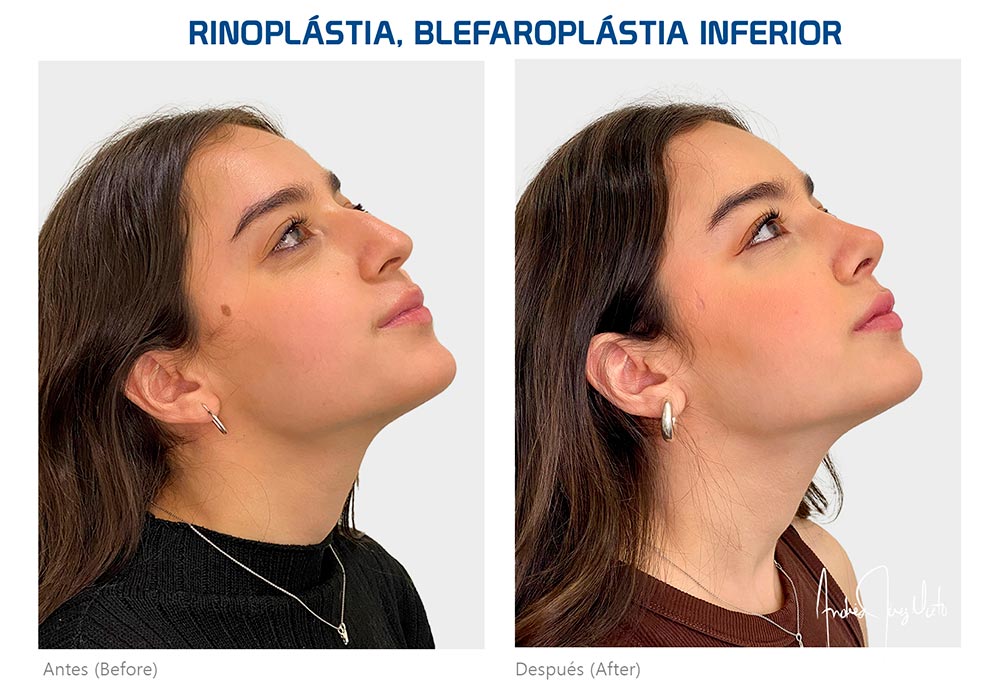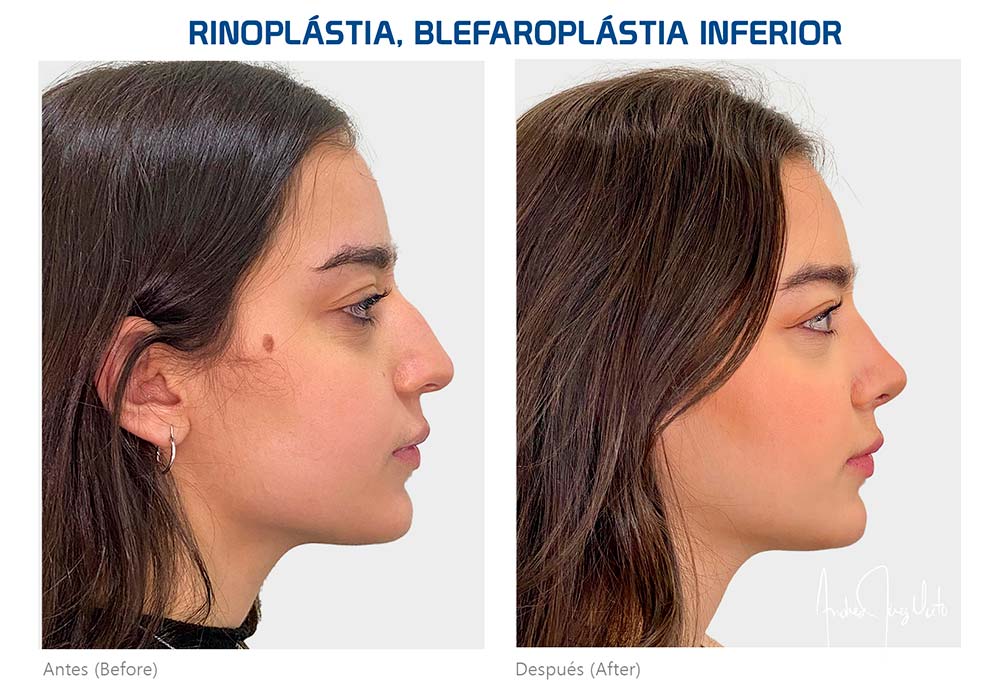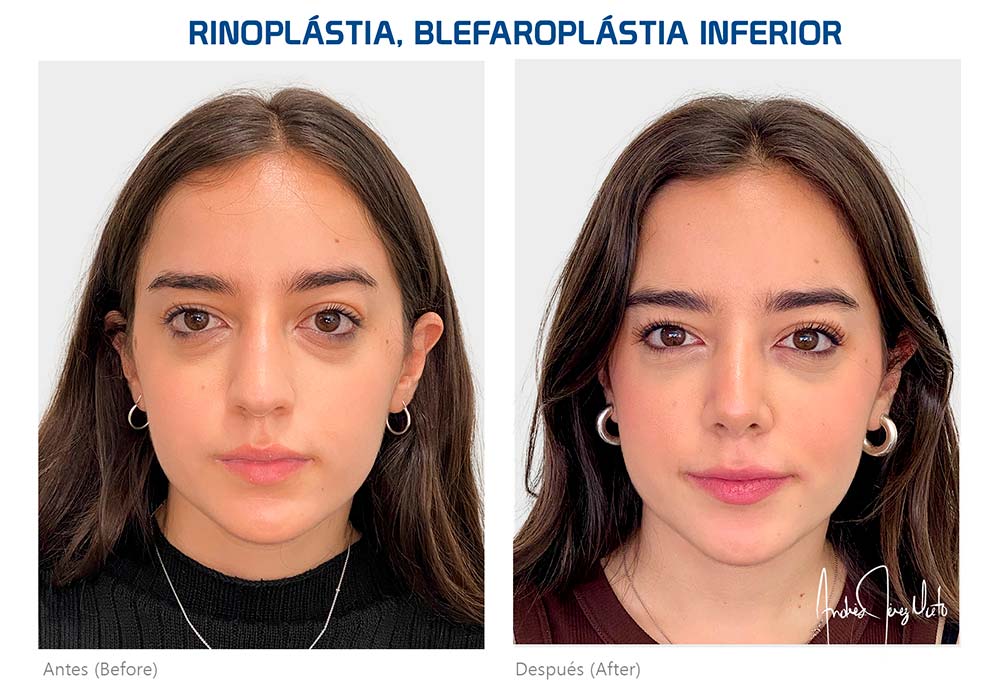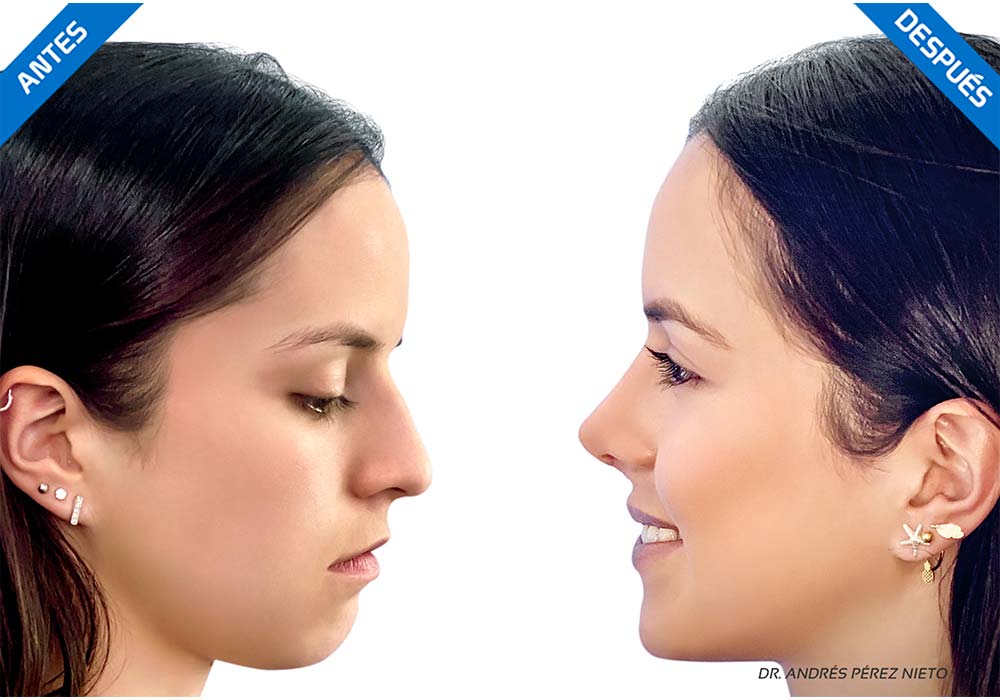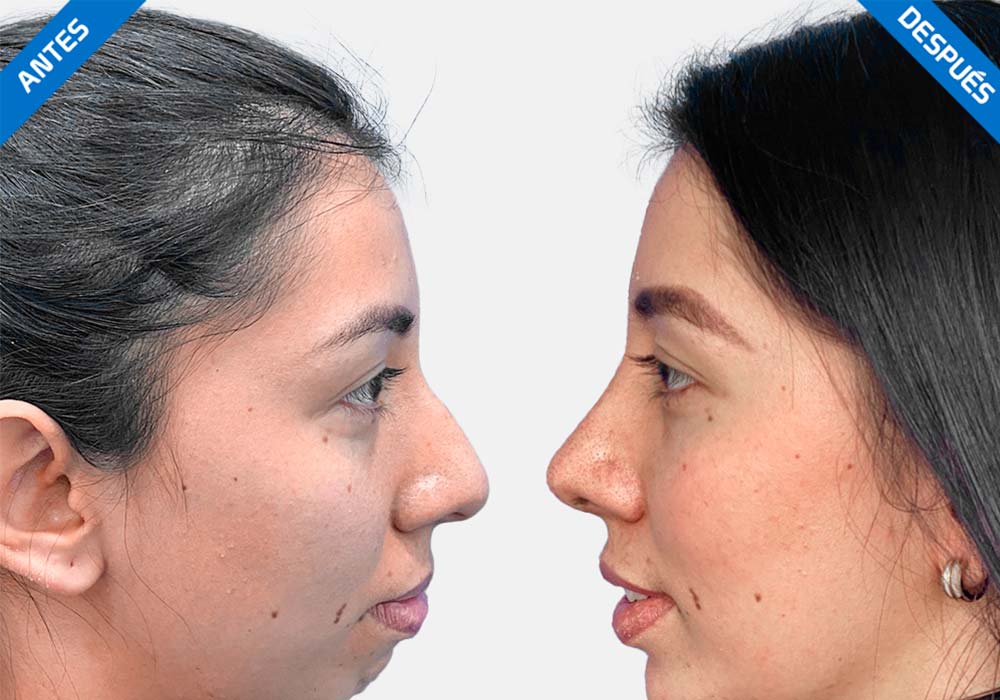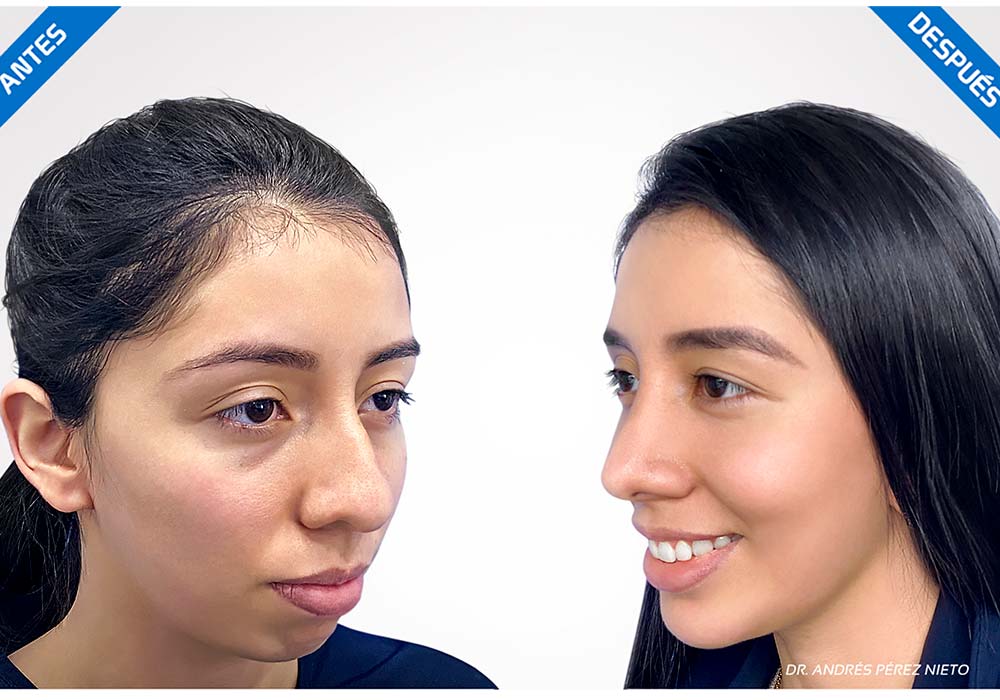RHINOPLASTY
RHINOPLASTY
More than any other area of the face, the nose has the ability to define much of our expression and the way we look.
COMPREHENSIVE ASSESSMENT
FUNCTIONALITY
NATURAL LOOK
DETAILS OF DR. PEREZ'S TECHNIQUE
- Allowing a direct and detailed view of the internal structures of the nose, such as the dorsum, tip, septum, among others.
- With this technique we can guarantee greater symmetry and durability of the results in the long term.
- It allows the adequate correction of the functional alterations that the patient may show, either in the turbinates, septum or nasal valve.
OUR EXCELLENT RESULTS
In most cases, rhinoplasty is performed under general anesthesia. The duration of the procedure ranges from 1 to 2 hours.
- Patients who wish to improve the appearance of their nose, in order to achieve greater harmony and balance with the rest of their facial appearance.
- Patients with nasal obstruction problems caused by structural alterations of the septum or turbinates.
- Patients with functional or aesthetic after-effects, due to trauma or previous nose surgeries.
There is usually mild swelling of the lower eyelids and cheeks.
Dr. Perez usually uses micropore tapes that cover the nose and a very light aluminum splint, which provides protection and eases the inflammation process. It is usually removed 7 days after surgery.
During the first postoperative days, most patients experience nasal obstruction, due to the inflammatory process that occurs within the nose. This situation improves with the use of an anti-inflammatory spray that Dr. Perez prescribes to his patients.
In order to perform this procedure, the patient must have completed facial bone development, which in females is usually reached by the age of 16 and in males by the age of 17 or 18.
Actually, there are 2 inflammatory stages that follow nose surgery:
Acute Stage: This stage is evident in a mild to moderate form, and lasts up to 10 to 15 days.
Late Stage: This process is practically unnoticeable, since it is confined to the inner tissues of the nose, as it disappears, the nose looks more distinct. This stage can last up to 8-10 months after surgery.
Nose surgery is not painful in the postoperative period, in fact if any increasing pain is experienced, it may be a sign of an ongoing complication.
One of the reasons for which nose surgery is considered one of the most complex procedures in plastic surgery, is because every nose is very different, and there are important anatomical variations between a Mestizo nose, an Afro-American nose or a European nose.
Aware of this, Dr. Perez treats each case individually, performing a thorough pre-operative assessment and implementing a surgical technique that is designed for each patient.
In most of his patients, Dr. Perez does not use postoperative nasal packing, as he uses a surgical technique of absorbable stitches placed at the nasal septum. The great advantage of this is that it allows patients to breathe through their nose right after surgery, thus avoiding the inconvenience and discomfort of nasal packing.
Patients who have suffered traumatic nasal fractures or after difficult-to-manage functional surgeries are an exception to this approach.
- In order to help drainage of the inflammation, we recommend maintaining a semi-sitting position of 30 degrees.
- Refrain from physical or athletic activities during the first week.
- Use saline solution to clean the inside of each nostril, in order to help remove scabs and secretions that may occur during the post-surgical period.
There is a certain consensus of opinion as to the age at which this procedure can be performed. This procedure should ideally be performed once body development has been reached, around 16 to 17 years of age, and once the patient is fully aware and mature enough to face a change in their facial appearance.

